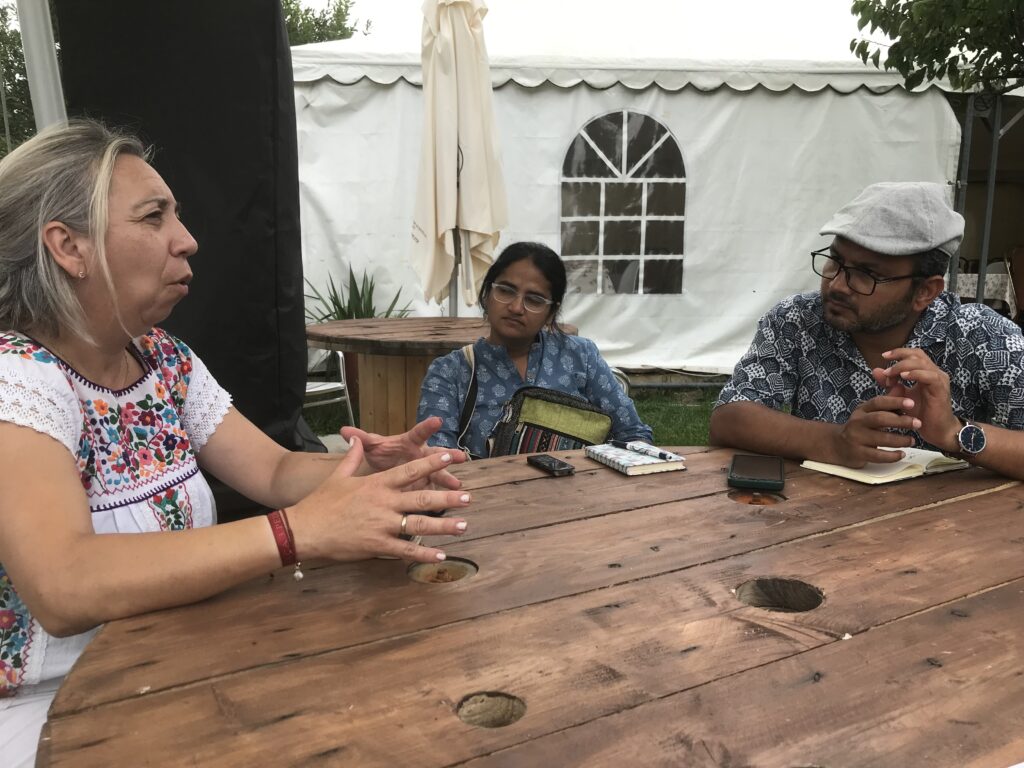
-
Facultade de Económicas
Universidade de Vigo
-
observatorio.eolico@uvigo.gal
-
Multifunctional Use in the Galician Countryside: An Experience Developed with a Female Perspective
- Home
- Wind Energy in Galicia
- Multifunctional Use in the Galician Countryside: An Experience Developed with a Female Perspective

- by OEGA
- 0 Comments
Multifunctional Use in the Galician Countryside: An Experience Developed with a Female Perspective
However, that past faded all too quickly. As the last family involved in cattle farming was on the verge of shutting down, red flags went up, signaling the beginning of a new chapter for Antas. The daughters of this village, who were the first to attend university, decided to take action. They took control of the communal lands, faced the threat of forest fires, dealt with disputes over communal boundaries, and set out to change the history of their parish. They bought the herd of cows from the last farming family and made it a community asset. They launched a local land bank, which allowed them to create a communal pasture for the cows. This initiative continues to this day, though it is now managed by a young family that uses the communal plot.

Following the fires of 2007, they decided to sell all the eucalyptus trees on the communal land and began a reforestation process with maritime pine (Pinus pinaster). They reached an agreement with the company FINSA to produce quality timber and ensure the financial sustainability of the land. They are proud of what they have accomplished.
The Antas CMVMC (Communal Mountain Land Association) has 92 members, 72 of whom are women. They tell us that their negotiation style is always the same: if a company wants to invest in the village, the profits and the jobs generated must benefit the community of Antas. Eru Louro, president of the CMVMC, says this approach has always worked for them. She adds, “If they don’t like working this way, they can find another community. We don’t want them in Antas.” This philosophy is reflected in the agreement with FINSA, where they’ve also managed to ensure that various forestry management tasks are carried out by personnel from the Juan XXIII Foundation, allowing people in situations of psychosocial vulnerability to access dual training programs. Finally, Eru Louro emphasizes that the timber company FINSA “only has joint rights over the trees, not the land or the CO2. We’ve reserved those for the CMVMC of Antas.”
However, they see their community project as being threatened by several wind farms, including the Monte Peón wind farm. The developer intends to build this farm with wind turbines very close to inhabited areas, disrupting the landscape and threatening Antas’ essential resources: the land, water, and biodiversity. They are so convinced of the threat that they are using the village’s human and financial resources to take legal action against the wind farm. At present, they have secured a temporary halt to the project. Eru Louro comments, “We don’t understand how the Xunta de Galicia allows these things to happen. It’s inconceivable that citizens, like the residents of Antas, have to spend their resources defending themselves against a multinational that comes to our land to install an industry without even talking to us first. We are open to modernity, we want to move forward, we believe in a different future, but the Xunta de Galicia should be on our side—on the side of those of us who believe in a rural future with homes full of people who want to live and be happy here, not just on the side of multinational companies.”

We concluded our visit to Antas, accompanied by Indian researchers Poonam Pandey and Aviram Sharma from the ‘Post-Growth Innovation Lab’ at the University of Vigo, with an in-depth exploration of the village’s rich cultural, environmental, and social heritage in the municipality of A Lama.